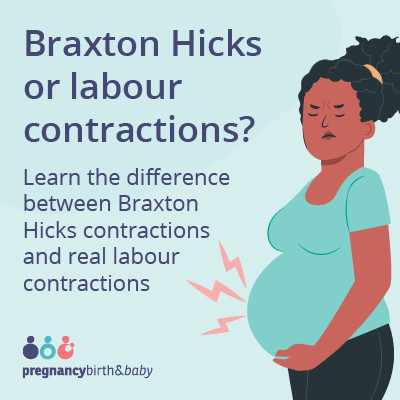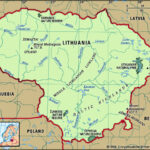Contractions are a hallmark of labor, signaling the exciting journey towards meeting your baby. But if you’re a first-time parent, or even if you’ve been through it before, understanding what contractions feel like and where contractions are felt can be crucial for navigating this experience. This guide will explore the sensations and locations associated with both Braxton Hicks and true labor contractions, helping you to confidently recognize the signs and know when to seek support.
What are Contractions?
Contractions are essentially the tightening and relaxing of the muscles of your uterus (womb). Think of them as rhythmic waves that play a vital role in childbirth. During a contraction, your uterine muscles work to achieve two primary goals: dilate your cervix and move your baby down the birth canal. The cervix, the lower part of the uterus, needs to open wide enough (dilate) to allow the baby to pass through. Contractions are the force behind this process and the descent of your baby during the first stage of labor.
You might experience contractions at various points in your pregnancy, but they are usually not noticeable in the early stages. As you approach labor, contractions become more pronounced, frequent, and, importantly, more painful. Many describe the sensation as a wave that begins at the top of your uterus and moves downwards. If you place your hand on your abdomen during a contraction, you’ll feel it harden as the muscles tighten, and then soften as the contraction releases. As labor progresses, these contractions increase in intensity and frequency, continuing until your cervix is fully dilated, approximately 10cm, ready for your baby’s arrival.
Where Do You Feel Contractions? Pinpointing the Sensations
The experience of contractions is unique to each individual, and where contractions are felt can vary. However, there are common areas where women typically feel the effects of uterine contractions:
-
Lower Abdomen: Many women describe the initial sensations of contractions as similar to period pain or menstrual cramps. This discomfort is typically felt in the lower abdomen, the area between your belly button and pubic bone. It can feel like a dull ache, a tightening, or cramping sensation that comes and goes in waves.
-
Lower Back: Back labor is a common experience for some women, where the primary pain is felt in the lower back. This can manifest as a persistent, dull ache that doesn’t subside, intensifying during contractions. The pressure from the baby’s position can contribute to back pain during labor.
-
Inner Thighs and Legs: Pain from contractions can radiate downwards, extending into the inner thighs and even down the legs. This radiating pain is due to the way uterine contractions can affect surrounding muscles and nerves, causing referred pain in these areas.
It’s important to remember that where contractions are felt and the intensity of the sensation can change as labor progresses. Early contractions might be milder and felt mainly in the abdomen, while later contractions can become stronger, more widespread, and felt in multiple locations simultaneously.
Braxton Hicks Contractions: Location and Sensation
Braxton Hicks contractions, often called “practice contractions” or “false labor,” can occur throughout pregnancy and are more commonly noticed in the second and third trimesters. These contractions are your uterus’s way of preparing for labor, but they do not cause cervical dilation.
Distinguishing Braxton Hicks from true labor contractions is essential, and where contractions are felt and how they feel can offer clues:
-
Irregularity and Location: Braxton Hicks are typically irregular in frequency and duration. They might occur sporadically and not follow a consistent pattern. While they can be felt in the abdomen, they are often less localized and may feel more like a general tightening rather than focused pain in specific areas.
-
Intensity and Relief: Braxton Hicks are usually uncomfortable rather than intensely painful. A key differentiator is that Braxton Hicks contractions often subside when you change position, walk around, or take a warm shower. True labor contractions, on the other hand, will persist and intensify regardless of these actions.
| Braxton Hicks contractions | Contractions (real labour) |
|---|---|
| irregular and short (usually lasting for 30 seconds) | may start as irregular, but will become regular and last longer as they continue |
| usually uncomfortable but not painful | usually more painful as they progress |
| walking does not make them stronger | walking may make them stronger |
| lying down may make them go away | lying down does not make them go away |
| do not get stronger | get stronger as they progress |
| do not get closer together | get closer together as they progress |

Alt text: Table comparing Braxton Hicks contractions and labor contractions, outlining differences in regularity, pain intensity, effect of walking and lying down, and progression over time.
What to Do When Contractions Start (and Location Matters)
When you begin experiencing contractions, it’s not always necessary to rush to the hospital or birth center immediately. If your pregnancy has been normal and you feel comfortable, you can often stay at home during the early stages of labor. For those planning a home birth, contacting your midwife when contractions begin is appropriate.
However, there are specific situations when immediate medical attention is needed:
- Water breaking: Note the time, color, and amount of fluid.
- Painful and regular contractions: Two or more contractions within 10 minutes.
- Advised early hospital visit: If your doctor or midwife has instructed you to come to the hospital early.
- Planned Cesarean: If you are in labor and have a scheduled Cesarean birth.
- Pre-existing medical condition: Requiring close monitoring during labor.
- Changes in baby’s movements.
Call emergency services immediately (like triple zero (000) in Australia) if:
- Rapid labor progression: If labor is progressing very quickly and you fear not reaching the hospital in time.
- Heavy vaginal bleeding.
- Severe headache or blurred vision: Potential signs of pre-eclampsia.
Understanding where contractions are felt and how the sensations change can help you gauge the progression of labor and make informed decisions about when to seek medical care.
Early Contractions and Location: Seek Prompt Advice
If you experience contractions or any other signs of labor before week 37 of your pregnancy, it’s crucial to contact your midwife or doctor immediately and proceed to the hospital. Babies born before 37 weeks are considered premature and may require specialized care. While many instances of early contractions do not lead to premature birth, it’s essential to seek professional medical advice to ensure the best possible outcome for you and your baby. Pay attention to where contractions are felt and describe the sensations accurately to your healthcare provider.
Easing Contraction Pain: Location-Focused Approaches
Managing pain during contractions is a key aspect of labor. There are various strategies, both non-medical and medical, to help ease discomfort. Considering where contractions are felt can guide your choice of pain relief methods:
-
Non-Medical Strategies:
- Warm Baths or Showers: Immersion in warm water can soothe muscles and provide overall pain relief, beneficial for contractions felt in the abdomen and back.
- Heat or Cold Packs: Applying heat packs to the lower back can alleviate back labor pain, while cold packs might be preferred by some for abdominal discomfort.
- Warm Showers: Similar to baths, warm showers can offer soothing relief.
- Acupuncture, Massage, and Relaxation Techniques: These methods can help manage pain perception and promote relaxation, addressing pain felt in various locations.
-
Medical Pain Relief:
- Nitrous Oxide Gas (Entonox): Inhaled gas for pain relief.
- Morphine: Injected pain medication.
- Epidural Analgesia: An epidural provides significant pain relief by blocking nerve signals, effective for widespread contraction pain.
Speak to your doctor or midwife during prenatal visits to discuss pain relief options and create a birth plan that aligns with your preferences.
Conclusion
Understanding contractions, including where contractions are felt, their sensations, and the differences between Braxton Hicks and true labor, is vital for a confident and informed birthing experience. By paying attention to your body, recognizing the patterns of contractions, and knowing when to seek medical guidance, you can navigate labor effectively and welcome your baby into the world with greater awareness and preparedness. Remember to communicate openly with your healthcare providers about your experience and any concerns you may have.
Resources and support
- Speak to your doctor or midwife during a prenatal visit about what you should do when you start to feel contractions. If you think you are in labour and have any questions or concerns, you call your midwife or doctor.
- Family Planning NSW Talkline also provides a free information service. Call 1300 658 886 (Monday to Friday, 8:00am – 8:00pm) or visit your nearest Family Planning NSW clinic.
 Alt text: Image promoting Pregnancy, Birth and Baby maternal child health nurse hotline and video call service.
Alt text: Image promoting Pregnancy, Birth and Baby maternal child health nurse hotline and video call service.
Speak to a maternal child health nurse
Call Pregnancy, Birth and Baby to speak to a maternal child health nurse on 1800 882 436 or video call. Available 7am to midnight (AET), 7 days a week.

